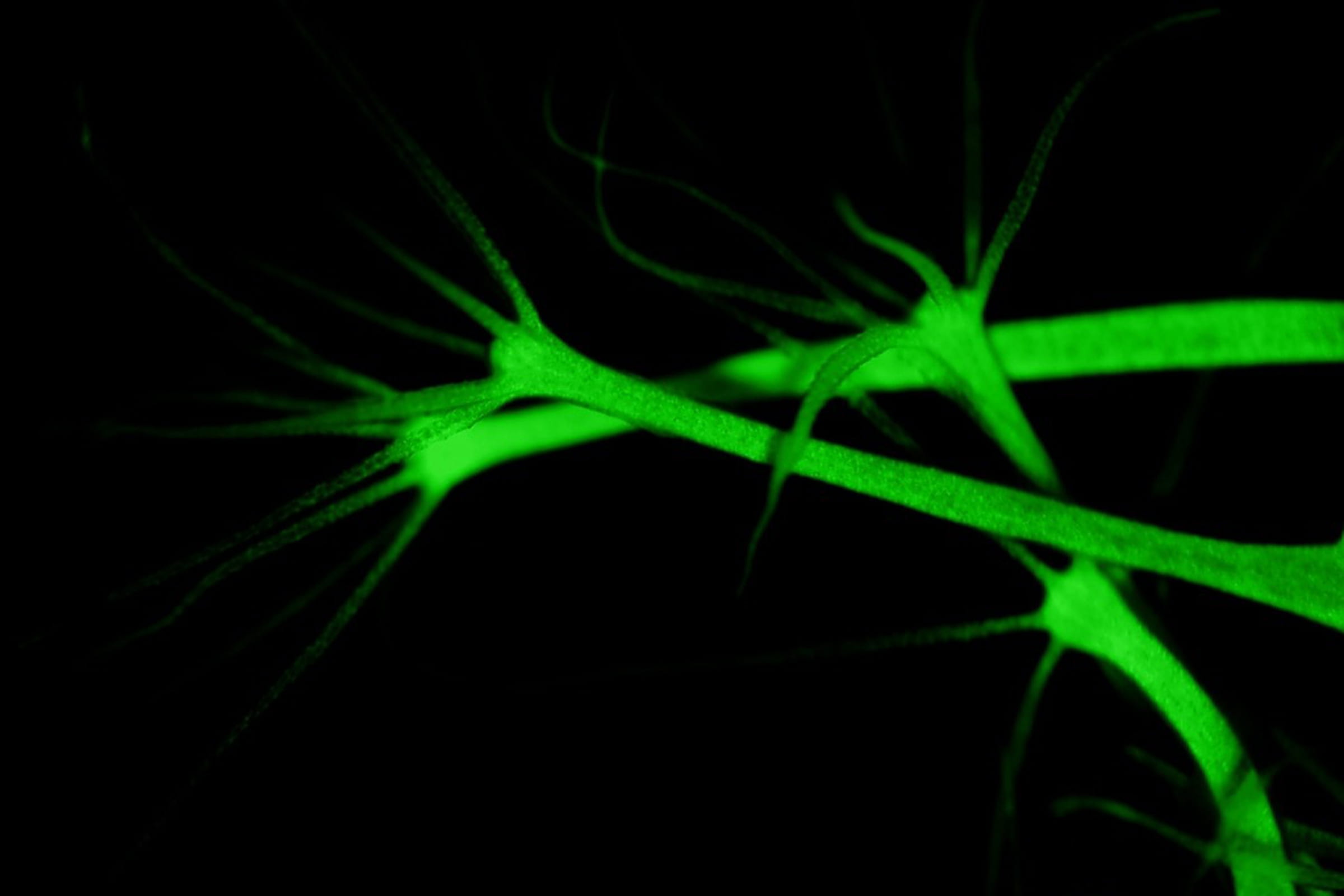UCI a historical hotbed of hydra research
UCI biologists’ groundbreaking work with the freshwater polyp hydra helped put a young campus on the map.

When an international team led by UC Irvine scientists sequenced the hydra genome —earlier this year, it marked the campus’s first major involvement with a genome sequencing effort.
But it wasn’t UCI’s first experience with the freshwater polyp. Since its founding days, the university has been a hotbed of hydra research, with many of the field’s most significant achievements stemming from the labs of biologists Hans Bode, Richard Campbell, Robert Josephson, Howard Lenhoff and Robert Steele.
“In the late ’60s and ’70s, our hydra researchers were the most influential group anywhere,” says Susan Bryant, vice chancellor for research and — as a developmental biologist at UCI since 1969 — a longtime colleague of the hydra group. “They did very important work and really put UCI on the map in the early days.”
Although the hydra is an inauspicious tubular organism less than a half-inch long, biologists are fascinated by its abilities to regenerate tissue and self-reproduce. Its cells are forever dividing and growing, thus providing a window into the phenomenon of embryo development. Study of the hydra has contributed to many key research areas, such as regeneration, stem cells and pattern formation, which explores how cells organize and grow into specific body parts.
“The hydra is in a constant, steady state, and from it you can learn the basic biological principles of higher animals,” says Campbell, professor emeritus of developmental & cell biology who gave the first biology lecture at UCI when it opened in 1965.
Hydra research was first documented in Abraham Trembley’s 1744 book, Memoirs Concerning the Natural History of a Type of Freshwater Polyp with Arms Shaped Like Horns. For more than 200 years, anyone interested in studying a hydra needed to pluck one from a local pond or an aquarium. But in the late 1950s, Lenhoff, who joined the UCI faculty in 1969, helped pioneer a method for growing hydras on a mass scale in the lab, which accelerated research.
From the mid-’60s into the ’90s, the labs of Lenhoff, Campbell, Josephson and Bode built the foundation of modern hydra biology through the Developmental Biology Center – which for UCI’s first quarter-century was in a Quonset-style barrack on North Campus.
Among their numerous key findings: Lenhoff demonstrated how specific small molecules control the hydra’s behavior; Campbell discovered how its cells divide, grow and differentiate; Josephson learned about the hydra’s neurophysiology; and Bode discerned how its stem cells and patterning processes work. This knowledge forms a sort of biological blueprint to help identify solutions for birth defects, cancers and other developmental diseases.
The Developmental Biology Center became a hive of hydra activity. “We hosted seminar speakers from all over the world; it was phenomenal,” Lenhoff says. “We became the first center for hydra research in the U.S.”
In 1986, he and his wife, Sylvia, translated Trembley’s groundbreaking book from French into English. They donated a copy of their translation, a copy of the original 1744 volume, and a rare, single-lens microscope like the one Trembley used to UCI’s Science Library in 2002. These remain on exhibit in the lobby today.
Steele, associate professor and interim chair in biological chemistry, joined the hydra team in 1986 and with Bode began to dig into the molecular biology of the polyp. In the early 2000s, they received a federal grant to identify and sequence a large number of its genes. This project led to the sequencing of the entire hydra genome, which was published March 14 in Nature.
Researchers found the hydra to have about the same number of genes as humans, sharing many of them. Surprisingly, they also discovered genes linked to Huntington’s disease and the beta-amyloid plaque formation seen in Alzheimer’s disease, suggesting the hydra could have a role in research targeting these two illnesses.
“Using the hydra as a disease model is relatively unexplored, but now with its genome sequenced, we can consider that. Because it’s a simple organism, experiment results would be easier to interpret,” says Steele. “The hydra is the Model T of animals. By studying it, you can really learn the basics.”